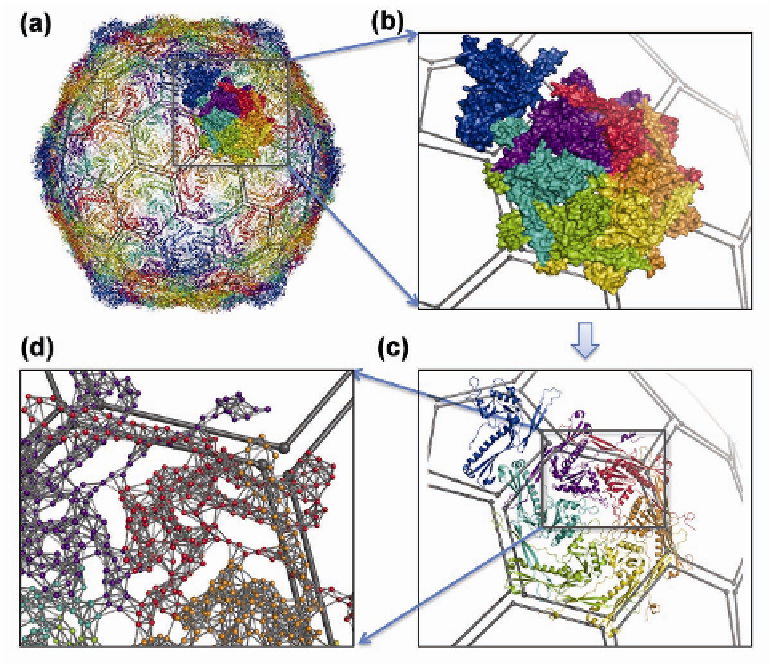Information Technology Reference
In-Depth Information
assembly, near equilibrium. The nodes of the network are the building blocks,
such as atoms, nucleotides or amino acids, from which the system is composed
(Fig. 7.1). Each node is typically represented as a point particle in three
dimensions (3D), and the edges of the network, or the springs joining the nodes,
represent harmonic restraints on displacements from the equilibrium structure.
Thus, the ENM provides an intuitive and quantitative description of behavior
near equilibrium: The starting conformation resides at the bottom of a harmonic
well, and any deviations from equilibrium will increase the energy and result in a
linear net force directed toward restoring the system to its lowest energy state.
Fig. 7.1
. From protein assemblies to network models.
(a) External view of the intact viral capsid
HK97 colored by chain, generated using the PDB file 2FT1 deposited by Johnson and coworkers
(Gan
et al.
, 2006). The capsid consists of 420 identical proteins arranged into 12 pentamers and
60 hexamers. (b) One asymmetric unit from panel (a) is enlarged. Each chain is in a distinctive
color, indicating a possible scheme for rigid building blocks. (c) One asymmetric unit shown as
secondary structures, in the same viewpoint and color scheme of panel (b). (d) A cartoon of the
ENM in which the nodes are C
α
atoms (spherical dots) and the edges represent the springs (or
elastic couplings) connecting pairs of nodes located within a distance of r
c
.

